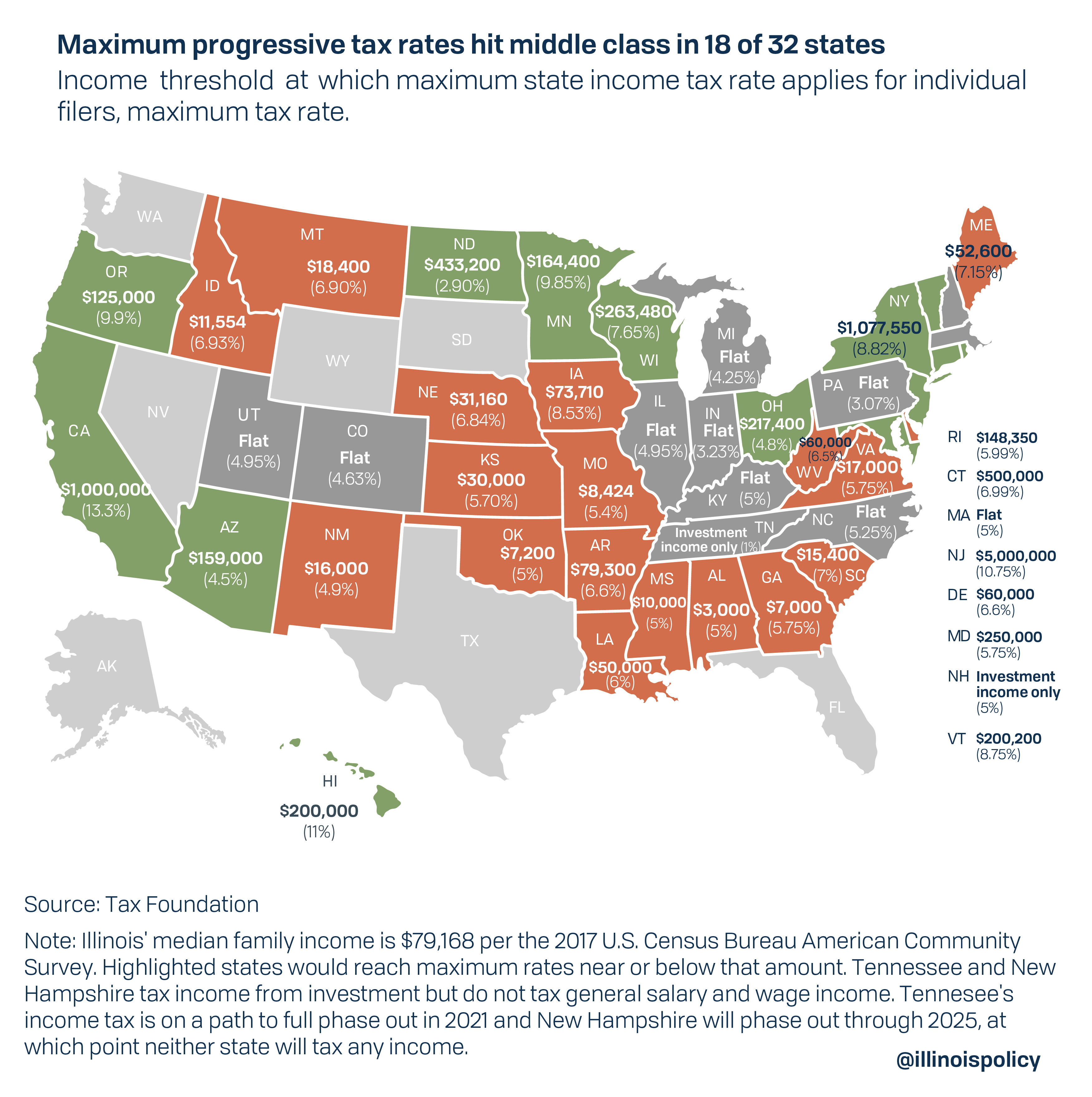Pritzker fact check: Do most other states really have a ‘fair tax’?
In more than half of progressive tax states, the middle class pays the maximum state income tax rate.
Illinois voters will have a rare opportunity to directly decide on taxes at the ballot box Nov. 3. That’s because in 2019, Illinois lawmakers approved a defining feature of Gov. J.B. Pritzker’s policy agenda by agreeing to ask voters to amend the Illinois Constitution and remove its flat tax protection.
Pritzker has made the adoption of a progressive income tax, which he calls the “fair tax,” a centerpiece of his policy agenda. The introductory rates attached to his plan would hike taxes on residents and businesses with incomes of $250,000 or more. Meanwhile, low-income residents would see a tax reduction of $6, while still paying the highest tax burden in the Midwest.
In his first budget address, the governor claimed “a fair tax is what three-quarters of states with income taxes have.”
But is that true?
The answer depends on how you define a “fair tax.” Pritzker has consistently sought to paint his plan as one that raises taxes only on “the rich,” while claiming everyone else would pay the same or less.
“It is not fair that I pay the same tax rate as a teacher, a child care worker, a police officer or a nurse,” Pritzker said.
However, in more than half of the states Pritzker claims have a “fair tax,” he would indeed pay the same tax rate as many middle-class taxpayers. That’s because in 18 of the 32 states that allow politicians to tax people differently based on income, the maximum tax rate hits at or near Illinois’ median family income of $79,168.

Pritzker is lumping together states such as California – which has 10 tax rates ranging from 1% to 13.3% on income over $1 million – with states such as Alabama that work much more like Illinois’ flat tax. Alabama has just 3 separate tax brackets and rates, with the maximum 5% rate affecting all income above just $3,000 for single filers or $6,000 for joint filers.
In fact, a political group funded by Pritzker received a “Mostly False” rating from PolitiFact for making claims similar to Pritzker’s.
The bottom line is in most states with a progressive income tax, the middle class is among the hardest hit. These facts undermine Pritzker’s claim that most states have a plan similar to his “fair tax” proposal and help demonstrate that removing the flat tax protection from Illinois’ constitution is almost certain to result in higher taxes on middle-class residents.
Simply put, the middle class is where the money is. More than 60% of taxable income belongs to Illinoisans making less than $100,000 a year.
If lawmakers sought to make up revenue losses from the COVID-19 economic fallout through the progressive income tax by raising taxes at the same proportions as the initial tax rates, the typical Illinois family would have to pay between $286 and $1,056 in additional taxes. If Pritzker were to try to fulfill his campaign promises for billions of dollars in additional spending, the typical family could pay up to $3,500 more.
Illinois residents deserve accurate information when they head to the polls to decide whether to grant lawmakers the broad new taxing powers Pritzker has requested. The governor should stop making misleading claims to sell his plan.
